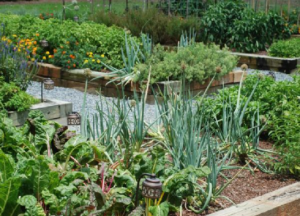
A. Introduction to Organic Gardening
Emphasizing the use of eco-friendly practices and the avoidance of synthetic chemicals, organic gardening is a holistic approach to raising plants. Emphasizing the need of ecological balance and wellness, organic gardening offers a whole method of sustainable agriculture.
Modern horticulture depends critically on organic methods since knowledge of environmental problems keeps developing and reflects the dedication to them. Adopting organic gardening techniques allows people to enjoy fresh, nutrient-dense food and help to preserve the earth.
With an eye toward soil health, biodiversity, and the inherent interdependence of life forms, this approach aims to establish a sustainable and balanced ecosystem in the garden. Organic gardening’s guiding ideas are those of tending to the ground, avoiding issues before they start, and making most natural use of existing techniques.
B. Why choose organic?
C. What Does ‘Organic’ Truly Mean?:
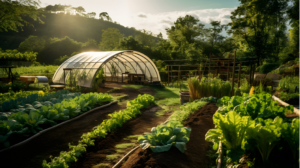
The dedication of organic gardening to environmentally sustainable methods that give soil health, biodiversity, and the avoidance of synthetic chemicals top importance defines it. The ideas of organic gardening show a dedication to establishing sustainable, healthy surroundings that support the ecosystem as well as the vegetation.
Organic gardening contrasts sharply with traditional techniques that sometimes give short-term yields top priority over long-term ecological health by stressing soil health, biodiversity, and natural insect control.
Attracting individuals looking for a more responsible and health-conscious method of horticulture, the organic gardening movement keeps gaining momentum as knowledge of environmental problems rises.
D. The Rise of Organic Gardening
1.Historical Context
Originally in response to the growing use of synthetic fertilizers and pesticides following World War II, organic gardening first emerged in the late 1940s mostly under the direction of eminent people including Sir Albert Howard and J.I. Promoting organic methods, supporting the use of compost, crop rotation, and biological pest control—all of which Rodale helped greatly—was mostly dependent on her Historically, organic methods have been recorded for ages; early references to them may be found in the writings of Pliny and Virgil, who stressed sustainable land management.
Modern organic gardening has developed greatly over the years from their work. Inspired by mounting environmental issues brought to light in books like Rachel Carson’s Silent Spring, which revealed the negative effects of chemical pesticides on ecosystems, the movement gathered steam in the 1960s.
2. Modern Popularity
Organic gardening has become somewhat popular today because of growing consumer awareness of environmental and health problems. With retail sales in the United States rising from around $20 billion in 2008 to almost $48 billion in 2019, the organic food business has increased tremendously. This trend shows a larger society’s movement toward sustainable living as well as demand for food free of dangerous chemicals and genetically modified organisms (GMOs).
E. Core Principles of Organic Gardening
Organic gardening is guided by several core principles:
- Soil Health: The basis of organic farming is thus keeping a rich, rich soil. This is accomplished by means of green manures to improve soil structure and nutrient content, crop rotation, and composting.
- Biodiversity: Encouragement of a varied spectrum of plants and animals in the garden aids in producing a healthy environment. This variety can enhance pollination and help to control insect populations.
- Natural Pest Control: Organic gardeners apply integrated pest management (IPM) techniques, which combine physical barriers to prevent pests without synthetic pesticides, cultural methods (such as crop rotation), and biological controls—that is, beneficial insects.
- Sustainability: Organic farming guarantees sustainable practices over the long run, preserving natural resources for future generations. This includes improved local ecosystems, waste reduction, and water savings.
Advantages of organic gardeners
F. Differences from Conventional Gardening
1. Chemical Use
- Organic Gardening: Organic gardening stresses on natural fertilizers and pest management while avoiding synthetic chemicals.
- Conventional Gardening: Often using chemical fertilizers and pesticides to increase plant development and control pests, conventional gardening can cause soil degradation and chemical runoff into ecosystems.
2. Soil Management
- Organic gardening prioritizes soil health through practices like composting, crop rotation, and the use of green manures, which enhance soil fertility and structure.
- Conventional gardening frequently uses chemical fertilizers that can lead to nutrient imbalances and soil depletion over time.
3. Biodiversity
- Organic gardening promotes biodiversity by incorporating a variety of plants and encouraging beneficial wildlife, which helps create a balanced ecosystem.
- Conventional Gardening: May focus on monoculture practices, which can increase vulnerability to pests and diseases and reduce overall ecosystem health.
4. Environmental Impact
- Organic Gardening: Aims to minimize environmental impact through sustainable practices that protect natural resources and promote ecological balance.
- Conventional Gardening: Can contribute to environmental issues such as pollution, habitat destruction, and loss of biodiversity due to the use of harmful chemicals and unsustainable practices.
G. Benefits of Organic Gardening
The benefits of organic gardening extend beyond the garden itself:
1. Environmental Benefits
- Soil Health: Organic gardening practices prioritize the maintenance and enhancement of soil health. By using natural fertilizers like compost and avoiding synthetic chemicals, organic gardening promotes a diverse soil ecosystem that supports plant growth and reduces erosion.
- Water Quality: Organic methods help protect water resources by preventing chemical runoff. Conventional farming often leads to water pollution from pesticides and fertilizers, whereas organic practices contribute to cleaner water systems by using natural amendments and sustainable irrigation techniques.
- Biodiversity: Organic gardening fosters biodiversity by encouraging a variety of plants and beneficial organisms. This diversity helps create a balanced ecosystem, which can naturally control pests and diseases without the need for harmful chemicals.
- Climate Change Mitigation: Organic practices can help combat climate change by reducing carbon emissions and enhancing carbon sequestration in soils. The avoidance of fossil fuel-based fertilizers and the promotion of sustainable practices contribute to a lower carbon footprint.
2. Health Benefits
- Chemical-Free Produce: Organic gardening eliminates the use of synthetic pesticides and fertilizers, resulting in food that is free from harmful chemical residues. This reduces the risk of exposure to toxins and promotes healthier eating habits.
- Nutritional Value: Research indicates that organic fruits and vegetables may have higher nutrient content compared to conventionally grown produce. For instance, organic foods often contain higher levels of vitamins and minerals, contributing to better overall health.
- Mental and Physical Well-Being: Engaging in organic gardening can provide physical exercise and mental relaxation, reducing stress and promoting a healthier lifestyle. The act of gardening itself can be therapeutic, enhancing one’s connection to nature and fostering a sense of accomplishment.
3. Economic Benefits
- Cost Savings: Growing your own organic vegetables can lead to significant savings on grocery bills. With the rising costs of organic produce in stores, cultivating your own garden allows for fresh, chemical-free food at a lower cost.
- Market Demand: As consumer demand for organic products continues to grow, organic gardening can be economically advantageous. Organic produce often fetches higher prices in the market, benefiting those who choose to sell their surplus harvests.
- Sustainable Practices: By investing in organic gardening, individuals contribute to a sustainable agricultural system that supports local economies and promotes responsible land use. This can lead to long-term economic benefits for communities focused on sustainability.
H. The Foundations of Organic Gardening
Organic gardening’s roots—soil quality, composting, and mulching—work in concert to produce a rich garden ecosystem.
Understanding and applying these techniques will help gardeners to preserve their plants, recycle waste, and improve their soil, therefore enabling a more sustainable and successful gardening environment. Accepting these fundamental components not only helps particular gardens but also promotes environmental health overall.
1. Soil: The Heart of Organic Gardening
Understanding Soil Health
Because it offers the fundamental nutrients, water, and support plants need to flourish, soil is sometimes referred to as the heart of organic gardening. Rich in organic content, with a balanced pH, and home to a varied community of microbes, earthworms, and other helpful species, healthy soil Important markers of soil condition consist in:
- Nutrient Content: For best plant development, essential nutrients, including nitrogen (N), phosphorous (P), and potassium (K), ought to be present at reasonable levels.
- Soil Structure: Well-structured soil’s good aeration and drainage let roots grow deep and access nutrients and water.
- Microbial Activity: A varied population of helpful microbes helps break down organic matter, fix nitrogen, and control infections.
2. Nurturing Soil Health with Organic Amendments
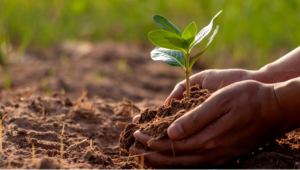
- Compost: Adding well-decomposed compost enriches the soil with nutrients, improves soil structure, and enhances microbial activity.
- Manure: Well-aged animal manure provides a rich source of nutrients and organic matter. Be cautious and use only well-composted manure to avoid pathogens.
- Cover Crops: Planting cover crops (such as clover or rye) during the off-season helps prevent erosion, suppress weeds, and improve soil fertility when tilled back into the soil.
- Organic Mulches: Materials like straw, wood chips, or shredded leaves can be added to the soil to improve its structure and nutrient content over time.
3. Composting: Turning Waste into Gold
Creating a Compost Pile
An essential practice in organic gardening, composting turns yard trash and culinary leftovers into nutrient-dense soil additions. Here’s how to build and keep up a good compost pile:
- Choose a Location: Select a well-drained area with good air circulation, ideally near your garden for easy access.
- Gather Materials: Collect a mix of “greens” (nitrogen-rich materials like fruit and vegetable scraps, grass clippings, and coffee grounds) and “browns” (carbon-rich materials like dried leaves, straw, and cardboard). A balanced mix of these materials is crucial for effective composting.
- Build the Pile: Layer the greens and browns in a pile or bin, aiming for a ratio of about 1 part greens to 3 parts browns. Ensure the pile is at least 3 feet high to retain heat.
- Aerate the Pile: Turn the compost every few weeks to introduce oxygen, which speeds up decomposition and prevents odors.
- Monitor Moisture: The compost should be moist but not soggy. If it feels dry, add water; if it’s too wet, add more browns.
Maintaining Your Compost
- Temperature: A well-maintained compost pile will heat up to 130-160°F (54-71°C), which helps kill pathogens and weed seeds. Use a compost thermometer to monitor temperature.
- Time: Depending on conditions, compost can take anywhere from a few weeks to several months to break down into a dark, crumbly substance.
- Finished Compost: When the compost is ready, it should have an earthy smell and a dark color. It can be used to enrich garden beds, potting mixes, or as a top dressing for plants.
4. The Art of Mulching: Protecting and Nourishing Your Soil
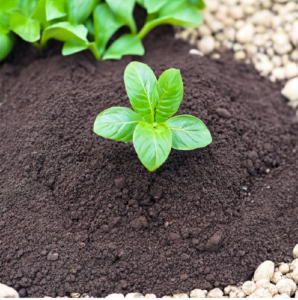
Benefits of Mulching
In organic gardening, mulching is a fundamental practice wherein organic or inorganic materials cover the ground surface. Mulching has advantages as follows:
- Moisture Retention: Mulch helps retain soil moisture by reducing evaporation, which is especially beneficial during dry periods.
- Weed Suppression: A thick layer of mulch can inhibit weed growth by blocking sunlight and preventing weed seeds from germinating.
- Temperature Regulation: Mulch acts as an insulating layer, keeping soil temperatures stable and protecting plant roots from extreme heat or cold.
- Soil Enrichment: As organic mulches decompose, they add nutrients back into the soil, improving its fertility over time.
Types of Mulch
- Organic Mulches: These include straw, wood chips, shredded leaves, grass clippings, and bark. They break down over time, enriching the soil.
- Inorganic Mulches: Materials like gravel, stones, or landscape fabric can be used for weed suppression but do not contribute nutrients to the soil.
Applying Mulch
- Apply a Layer: Spread a layer of mulch 2-4 inches thick around plants, keeping it a few inches away from stems to prevent rot.
- Replenish Regularly: Organic mulch will break down over time, so it’s important to replenish it regularly to maintain its benefits.
- Monitor for Pests: While mulching can deter some pests, it can also provide habitat for others. Regularly check for any signs of pest activity.
I. Choosing the Right Plants for Your Organic Garden
Heirloom Plants
Often prized for their rich flavors and unusual traits, heirloom plants are types passed down through generations. Heirloom plants have pros in that their seeds may be preserved and replanted year after year without losing their characteristics, and they can be pollinated naturally (wind, insects, etc.).
- Flavor and Variety: Heirlooms are often praised for their superior taste and aesthetic diversity, making them a favorite among gardeners who prioritize culinary quality.
- Seed Saving: Heirloom seeds can be saved and replanted, allowing gardeners to cultivate a continuous supply of plants that are adapted to their local growing conditions.
- Cultural Heritage: Growing heirloom varieties helps preserve agricultural history and biodiversity.
Cons of Heirloom Plants:
- Disease Susceptibility: Heirloom varieties may be more prone to diseases and pests compared to hybrids, which are often bred for resistance.
- Variable Yields: They may produce less fruit and can be less uniform in size and shape.
Hybrid Plants
By means of regulated cross-pollination between two distinct parent kinds, hybrid plants generate offspring with desired features such enhanced yield, disease resistance, and uniformity. Benefits of hybrid plants include
Pros of Hybrid Plants:
- Higher Yields: Hybrids are often bred for maximum productivity, making them suitable for gardeners looking to harvest larger quantities.
- Disease Resistance: Many hybrids are developed with specific traits that provide resistance to common pests and diseases, which can be beneficial in challenging growing conditions.
- Consistency: Hybrids tend to produce more uniform fruits, which can be appealing for market gardeners.
Cons of Hybrid Plants:
- Seed Saving Limitations: Seeds from hybrid plants do not produce true to type in subsequent generations, meaning gardeners cannot reliably save seeds from hybrids for future planting.
- Flavor: Some hybrids may lack the rich flavors often found in heirloom varieties, which can be a drawback for culinary enthusiasts.
In deciding between heirloom and hybrid plants, consider your gardening goals, such as whether you prioritize flavor, yield, or the ability to save seeds .
2. Companion Planting: Nature’s Pest Control
Companion planting involves strategically placing different plants together to enhance growth, deter pests, and improve overall garden health. This method leverages the natural relationships between plants to create a balanced ecosystem.
Benefits of Companion Planting
- Pest Deterrence: Certain plants can repel pests that would otherwise harm neighboring crops. For example, marigolds are known to deter nematodes and aphids.
- Attracting Beneficial Insects: Companion plants can attract pollinators and beneficial insects, such as ladybugs and lacewings, which help control pest populations.
- Nutrient Enhancement: Some plants, like legumes, can fix nitrogen in the soil, benefiting neighboring plants that require higher nitrogen levels.
Examples of Companion Planting
- Tomatoes and Basil: Basil can enhance the flavor of tomatoes and repel pests like aphids and whiteflies.
- Carrots and Onions: These two can be planted together as their scents can confuse pests that target one another.
- Corn, Beans, and Squash (Three Sisters): This traditional planting method involves growing corn to support beans, which fix nitrogen, while squash provides ground cover to suppress weeds.
By implementing companion planting strategies, gardeners can naturally enhance plant health and reduce the need for chemical interventions .
3. Native Plants: Growing What Belongs
Incorporating native plants into your organic garden offers numerous ecological benefits. Native species are adapted to the local climate and soil conditions, making them more resilient and easier to maintain.
Benefits of Native Plants
- Biodiversity Support: Native plants provide habitat and food for local wildlife, including pollinators, birds, and beneficial insects, contributing to a balanced ecosystem.
- Low Maintenance: Because they are adapted to local conditions, native plants typically require less water, fertilizer, and pest management compared to non-native species.
- Soil Health: Native plants often have deep root systems that improve soil structure and health, enhancing water infiltration and reducing erosion.
- Cultural Significance: Many native plants hold cultural importance and can be used in traditional practices, promoting local heritage.
Choosing Native Plants
When selecting native plants, consider:
- Local Adaptation: Choose species that are well-suited to your specific region and soil type.
- Diversity: Incorporate a variety of native plants to support different wildlife and create a more resilient garden.
- Seasonal Interest: Select plants that offer blooms, fruits, or foliage at different times of the year for continuous interest and habitat.
By choosing native plants, gardeners can create a sustainable and vibrant ecosystem that supports local wildlife while reducing maintenance efforts .
J. Sustainability and Organic Gardening
Reducing the environmental impact of your garden depends on sustainable gardening techniques, including chemical free design, composting, water conservation, and native species planting.
While wildlife-friendly gardening promotes biodiversity and generates a thriving environment, perennial integration can improve soil health and lower upkeep. Gardeners that follow these guidelines will help to create a better surroundings and take advantage of the several advantages of sustainable garden.
Reducing the Footprint of Your Garden: Methodologies for increasing the Environmental Friendship of your garden The role perennials play in a low-maintenance, sustainable garden is one of importance. Building a Biodiverse Haven: By giving animal habitats in your garden, you are promoting diversity.
Reducing environmental impact, advancing biodiversity, and building a low-maintenance garden all depend on sustainable gardening techniques. Here is a thorough investigation of methods to make your garden more environmentally friendly, the function of perennials, and how to provide habitats for wildlife.
K. Reducing Your Garden’s Footprint: Sustainable Practices
1. Eliminate Chemical Use
Eliminating man-made chemicals—including fertilizers and pesticides—is one of the basic ideas behind sustainable gardening. These compounds can damage local fauna, contaminate rivers, and compromise soil quality. Rather, emphasize natural substitutes, including:
- Natural Fertilizers: Use compost, manure, or organic fertilizers to enrich the soil without harmful chemicals.
- Integrated Pest Management (IPM): This approach combines biological, cultural, and mechanical practices to manage pests with minimal environmental impact. For example, introducing beneficial insects or using physical barriers can reduce pest populations naturally.
2. Composting
One really good approach to cutting waste and improving garden soil is to build a compost pile. Kitchen waste and yard trash are turned into nutrient-dense organic materials by composting. These ideas can help you to compost effectively:
- Materials: Include a mix of greens (nitrogen-rich materials) and browns (carbon-rich materials) to create a balanced compost heap.
- Maintenance: Turn the pile regularly to aerate it and monitor moisture levels to ensure efficient decomposition.
3. Water Conservation
Implementing water-saving techniques can significantly reduce your garden’s ecological footprint:
- Drip Irrigation: Use drip irrigation systems to deliver water directly to plant roots, minimizing evaporation and runoff.
- Rain Barrels: Collect rainwater in barrels to use for watering your garden, reducing reliance on municipal water supplies.
4. Plant Native Species
Native plants are adapted to local climates and soils, making them more resilient and requiring less maintenance. Benefits include:
- Lower Water Needs: Native plants typically require less irrigation, as they are adapted to local rainfall patterns.
- Attracting Pollinators: Native species provide habitats and food for local wildlife, including bees and butterflies, which are essential for pollination.
5. The Role of Perennials in a Sustainable Garden
Perennial plants are those that live for more than two years, and they play a crucial role in sustainable gardening:
1. Low Maintenance
Perennials require less maintenance compared to annuals, as they do not need to be replanted each year. This reduces labor and resource input over time.
2. Soil Health
The deep root systems of many perennials improve soil structure, enhance water retention, and reduce erosion. They also contribute organic matter to the soil as their leaves and stems die back each year.
3. Biodiversity
Incorporating a variety of perennial plants can enhance biodiversity in the garden. This diversity supports a range of beneficial insects and wildlife, contributing to a balanced ecosystem.
4. Seasonal Interest
Perennials provide visual interest throughout the seasons, with many varieties blooming at different times, thus ensuring that your garden remains vibrant year-round.
L. Wildlife-Friendly Gardening: Creating a Biodiverse Haven

Encouraging biodiversity in your garden not only supports local wildlife but also enhances the health of your garden ecosystem. Here are some strategies to create a wildlife-friendly garden:
1. Provide Habitats
- Birdhouses and Feeders: Install birdhouses and feeders to attract birds that help control insect populations.
- Insect Hotels: Create habitats for beneficial insects, such as ladybugs and bees, by providing structures where they can nest and shelter.
2. Diverse Planting
Plant a variety of species, including flowers, shrubs, and trees, to create a rich habitat that supports different forms of wildlife. Aim for a mix of native and non-invasive plants that can provide food and shelter.
3. Water Sources
Incorporate water features, such as birdbaths or small ponds, to provide drinking and breeding habitats for wildlife. Ensure that these water sources are shallow enough for smaller animals to access safely.
4. Avoid Monocultures
Diverse planting reduces the risk of pest outbreaks and diseases. Avoid planting large areas of a single species, and instead, create mixed plantings that can support a variety of wildlife.

There are many benefits—personal and environmental—from organic gardening. Gardeners who use sustainable methods will be able to enjoy nutrient-dense, fresh food and help to preserve the earth. Growing one’s own food helps one feel accomplished and develop a closer relationship with the environment.
Additionally, organic gardens offer chances for physical exercise, stress release, and community involvement. Larger-scale environmental sustainability can be greatly enhanced by the general acceptance of organic gardening.
Reducing chemical use, supporting biodiversity, and improving soil health help organic gardeners significantly protect ecosystems and slow down global warming. Beyond individual gardens, the good knock-on effects help the world to be generally healthy.
M. Conclusion
A whole method of cultivating plants that gives environmental preservation, personal health, and communal well-being top priority is organic gardening. Gardeners who use sustainable techniques can help to build nutrient-dense food, vibrant ecosystems, and a more sustainable future.
Whether you’ve been gardening for years or are just beginning your organic path, this practice offers many benefits on a broad scale. Working together to encourage organic farming can help produce a better, healthier planet for future generations.
N. FAQs about organic gardening, particularly aimed at beginners:
- What is organic gardening?
Growing plants organically—that is, without synthetic fertilizers, pesticides, or genetically modified organisms—is a technique It emphasizes improving biodiversity and soil condition. - Why should I choose organic gardening?
By lowering chemical runoff, supporting improved soil, and generating food free of dangerous residue, organic gardening helps the environment and promotes your family’s and your own better health. - What do I need to start an organic garden?
First, you’ll need quality seeds or seedlings, good soil, compost, organic fertilizers, and simple gardening implements including a shovel, rake, and watering can. - How do I improve my soil health?
Using cover crops, adding organic matter like compost, and skipping chemical fertilizers will help to enhance soil health. Frequent soil testing might also clarify your need for particular nutrients. - What are the best plants for beginners?
For novices, some simple, low-growing plants are tomatoes, zucchini, lettuce, and herbs like basil and parsley. Select plants fit for your environment and ones you would like to consume. - How do I control pests organically?
Utilizing natural repellents (such as neem oil), introducing beneficial insects (such as ladybugs), and utilizing physical barriers (like row covers) to guard plants are organic means of pest management. - What is composting, and why is it important?
Composting is the method of turning organic waste—such as yard trash and food scraps—into nutrient-dense soil amendment. It decreases waste, increases moisture retention, and enriches soil. - How much sunlight do my plants need?
Most fruits and vegetables need a minimum six to eight hours of direct sunlight per day. Make sure your garden sits in a sunny area to encourage robust development. - Can I garden in small spaces?
Indeed! Container gardening, vertical gardening, or raised beds let you practice organic gardening in small areas, therefore enabling food production even in limited locations. - How do I know if my seeds are organic?
Search for seeds branded as “Certified Organic” or look for the OMRI (Organic Materials Review Institute) seal. This guarantees that the seeds have been grown devoid of synthetic chemicals or genetically modified organisms.

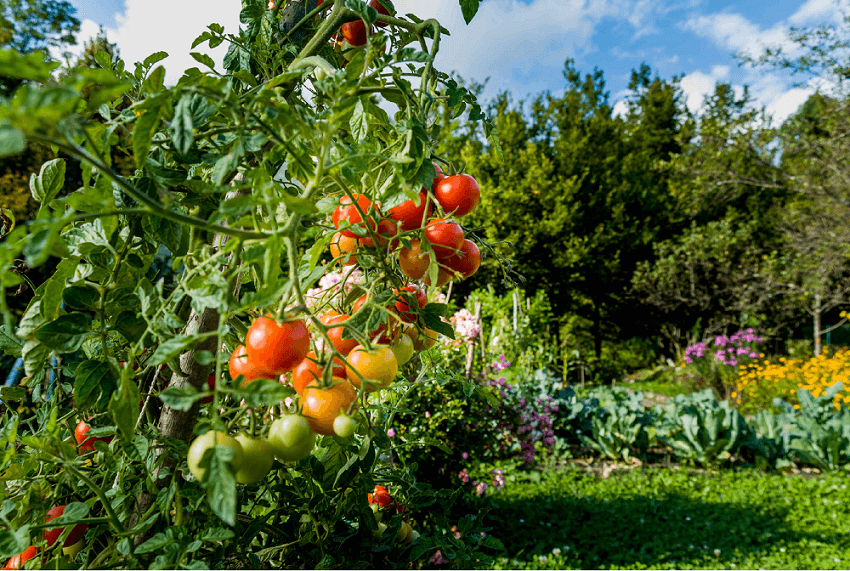



I very delighted to find this internet site on bing, just what I was searching for as well saved to fav
Pretty! This has been a really wonderful post. Many thanks for providing these details.
I appreciate you sharing this blog post. Thanks Again. Cool.
Awesome! Its genuinely remarkable post, I have got much clear idea regarding from this post
Your article helped me a lot, is there any more related content? Thanks!
Tech dae Awesome! Its genuinely remarkable post, I have got much clear idea regarding from this post . Tech dae